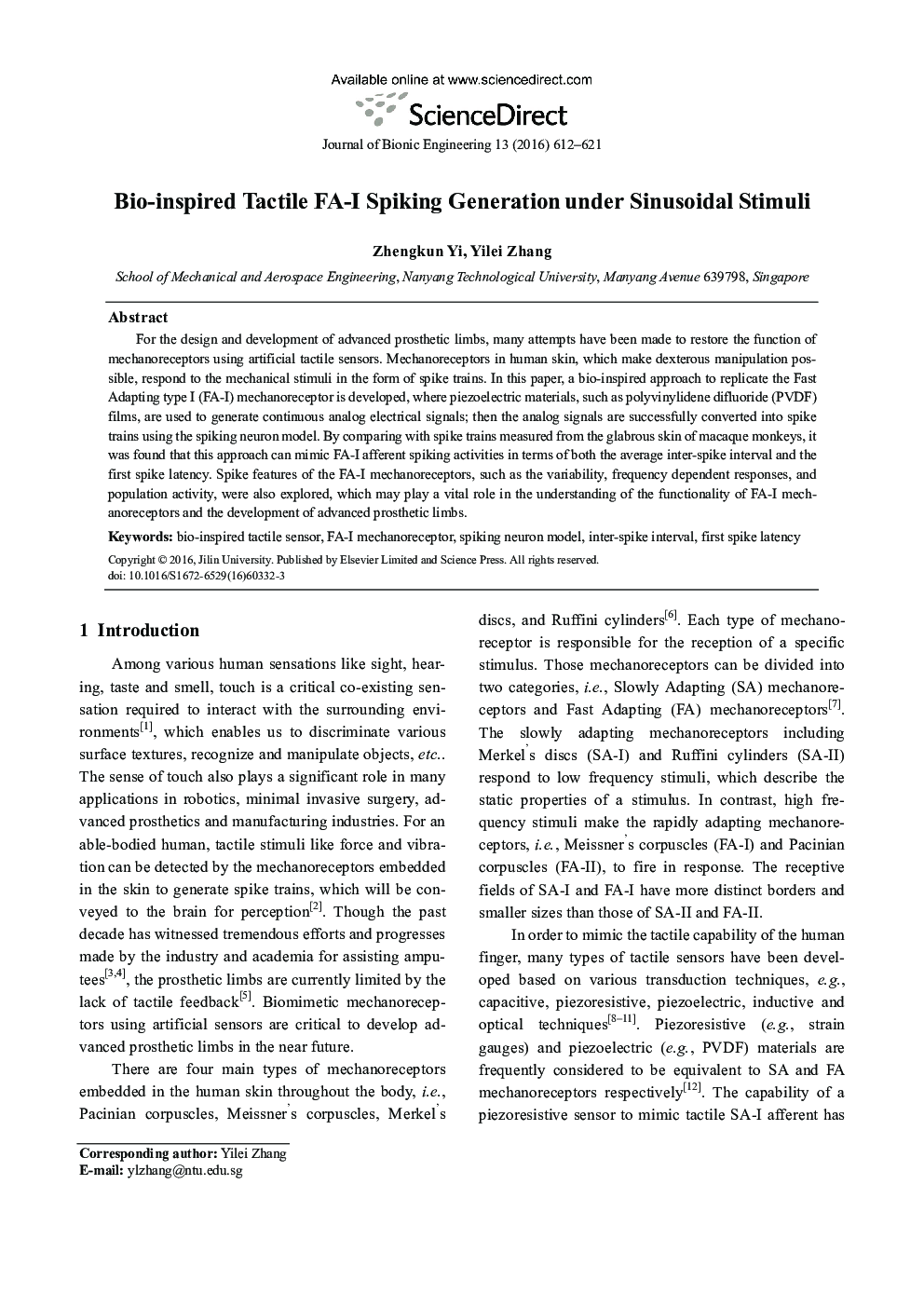| Article ID | Journal | Published Year | Pages | File Type |
|---|---|---|---|---|
| 7216522 | Journal of Bionic Engineering | 2016 | 10 Pages |
Abstract
For the design and development of advanced prosthetic limbs, many attempts have been made to restore the function of mechanoreceptors using artificial tactile sensors. Mechanoreceptors in human skin, which make dexterous manipulation possible, respond to the mechanical stimuli in the form of spike trains. In this paper, a bio-inspired approach to replicate the Fast Adapting type I (FA-I) mechanoreceptor is developed, where piezoelectric materials, such as polyvinylidene difluoride (PVDF) films, are used to generate continuous analog electrical signals; then the analog signals are successfully converted into spike trains using the spiking neuron model. By comparing with spike trains measured from the glabrous skin of macaque monkeys, it was found that this approach can mimic FA-I afferent spiking activities in terms of both the average inter-spike interval and the first spike latency. Spike features of the FA-I mechanoreceptors, such as the variability, frequency dependent responses, and population activity, were also explored, which may play a vital role in the understanding of the functionality of FA-I mechanoreceptors and the development of advanced prosthetic limbs.
Related Topics
Physical Sciences and Engineering
Engineering
Biomedical Engineering
Authors
Zhengkun Yi, Yilei Zhang,
